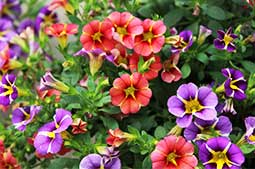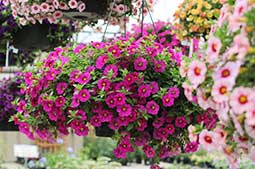How to Fertilize Annuals
The two primary reasons for fertilizing annuals are to encourage growth, and create a healthy, vigorous, attractive plant that will produce an abundance of flowers. Annuals only get 1 growing season to put their best foot forward. Gardeners want to help them put on the best show possible since they won't get a second chance.
Annuals bloom best when they are fertilized on a regular basis. In the ground, every 2-3 weeks; in containers, every 10-14 days. Plants in containers do well with a time release fertilizer. Be careful not to apply fertilizer too heavily. Doing so may cause the plant tissue to burn, or even result in plant death. Read product labels carefully and follow directions to avoid toxicity problems. As a general rule, the slower the plants habit of growth, the less fertilizer it needs. Plants that are producing an abundance of blooms generally need more fertilizer.

If over-fertlilizing your plants is too much a worry to bare, you might consider easing your mind by using a natural or organic fertilizer. Organic fertilizers are usually made with natural ingredients such as composted manures or other organic matter, and as a result are much less-likely to burn your plants.
Avoid using fertilizers that have a high nitrogen (N, first number) content. Too much nitrogen can cause too much foliage growth, and too little flower production. Many annual bedding plants appreciate more phosphorus (P, middle number).
Our Recommendation:

Garden Elements Bud and Bloom Plant Food & Water Soluble Fertilizer
Fully available minor and macro elements, specially formulated to help your plants grow to their ultimate flowering potential.
Ingredients: Derived from Ammonium Phosphate, Potassium Phosphate, Potassium Nitrate, Potassium Sulfate, Iron Edta, Manganese Edta
